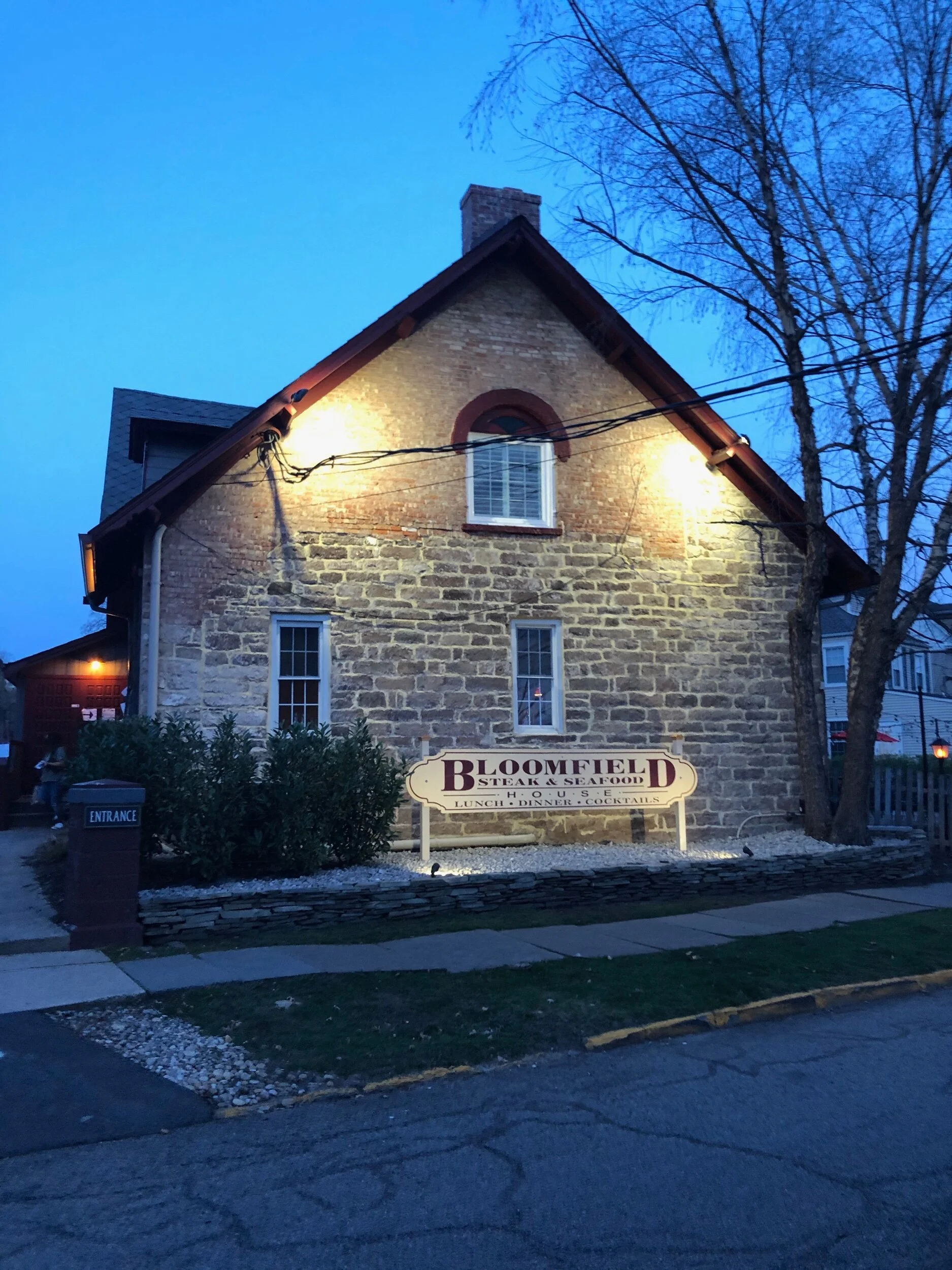YOU ARE NOW A PART OF HISTORY
The "Old Joseph Davis House,” now The Bloomfield Steak and Seafood House stands as a client monument to the early history of Bloomfield. It is THE OLDEST and most historic dwelling of the Pre-Revolutionary War homes in Essex County.
The Homestead was built by Thomas Davis in 1676 and remained occupied by his descendants until 1903. The house was built long before the time of cement and yet will likely last 1000 years. The main walls are two feet thick at the base and eight to ten feet thick in the old cellar. Thick walls and small windows were intended to give maximum protection from enemies.
Over the past three centuries, The Davis Homestead has been a farmhouse, hospital, church, and restaurant. While occupied by Joseph Davis about the time of the Revolution, the home was a meeting place for founders of the Presbyterian Church of Bloomfield and services were held here for many years before a church was built.
During the Revolutionary War, the Davis Homestead housed General Hugh Knox and his staff for some time. General George Washington visited with General Knox in July of 1778, and was a guest at several dinners while reviewing reports in the movement of his army.
General Joseph Bloomfield and his wife were guests of the Davis family and it was at the Davis Homestead on October 26, 1796, that a group of leading
citizens selected the name of Bloomfield for the town that had formerly been part of Newark. Later, General Bloomfield served two terms as Governor of New Jersey.
A wounded English soldier was taken into the Homestead by the Davis family women and nursed back to health. To show his appreciation, the soldier built the old well and hewed out of stone the basin next to it for the slaves to wash. The well curb is now a converted planter near the front entrance.
In the basement of the Bloomfield Steak and Seafood House there is something truly remarkable. Deep in the cellar, it is a link to the roots of American history. The basement was connected to a tunnel that was originally used to transport women and children during the Revolutionary War to escape British soldiers. Centuries later, it was a part of the "Freedom Route" that was a means of escape and safety for enslaved people seeking freedom as part of the Underground Railroad.
There have been but a few transfers or alterations of this property since Revolutionary times. The original oak beams are still contained and its present decor has a flavor of its historic years. If the house could tell tales, an interesting history could no doubt be compiled in connection with its own experience during the Revolutionary War, The War of 1812, our own Civil War and on down to the present.
Thank you for joining us. You are now a part of (our) history.
